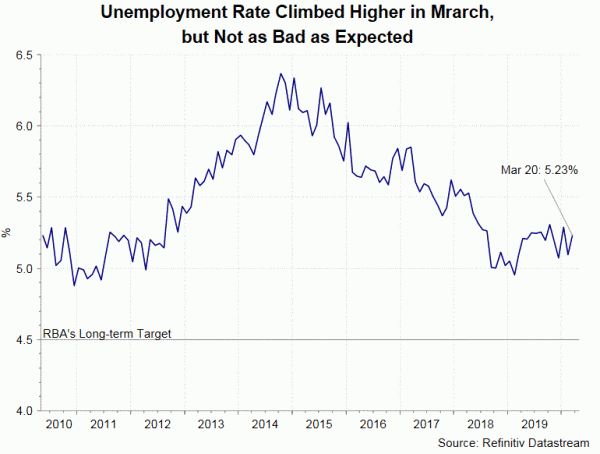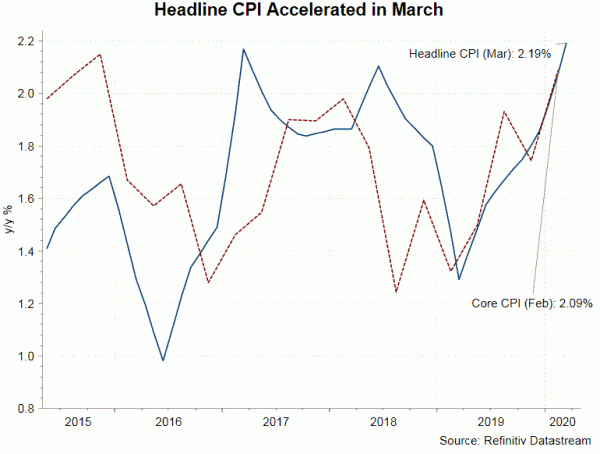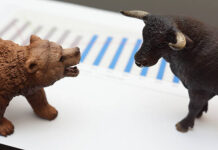RBA is widely expected to leave the cash rate unchanged at 0.25% on the May 5 meeting. It will also keep other stimulus measures, including targeting 3-year bond yield, term funding facility operation and QE, announced in March the same. The members will, however, markedly revise lower economic projections.
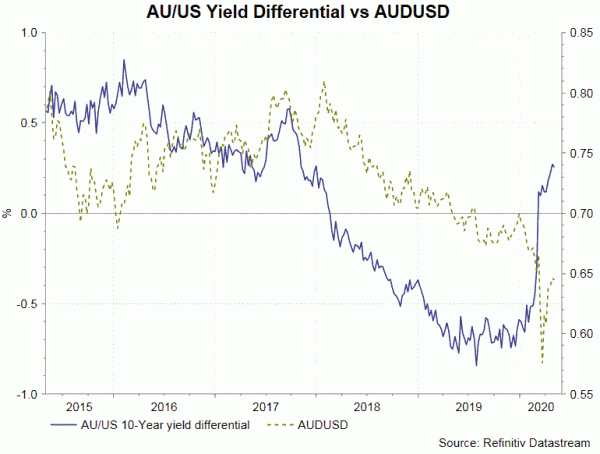
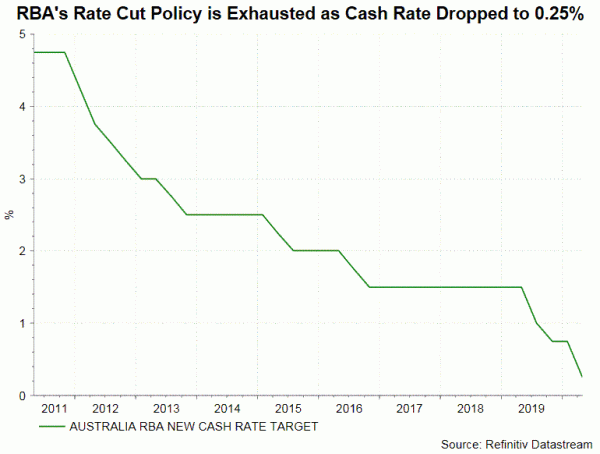
 In March, RBA lowered the policy rate, each by -25 bps, in March 3 and March 19. Meanwhile, it announced to buy government and semi-government bonds across the yield curve, targeting the yield on 3-year Government bonds at around 0.25%. Besides, the central bank launched a 3-year funding facility of at least AUD90B for the banking system to target SMEs. It has also pledged to conduct repo operations of one month, three months and six months. Similar to other central banks, such as Fed and ECB, RBA should take some time to evaluate the impacts of the measures.
In March, RBA lowered the policy rate, each by -25 bps, in March 3 and March 19. Meanwhile, it announced to buy government and semi-government bonds across the yield curve, targeting the yield on 3-year Government bonds at around 0.25%. Besides, the central bank launched a 3-year funding facility of at least AUD90B for the banking system to target SMEs. It has also pledged to conduct repo operations of one month, three months and six months. Similar to other central banks, such as Fed and ECB, RBA should take some time to evaluate the impacts of the measures.
The job market was less bad than market expectations. The unemployment rate climbed +0.1 percentage point to 5.2% in March, compared with consensus of 5.5%. Total payrolls added +5.9K, compared with +26.7K increase in February. Yet, the market had anticipated a decline of -40K. Full-time jobs, however, contracted -0.4K, after gaining +6.7K a month ago. On inflation, headline CPI surprisingly accelerated to 2.2% y/y in 1Q20, from +1.8% a quarter ago. The market had anticipated a modest increase to +2%. Both of RBA’s inflation gauges improved, averaging at 1.75% in March quarter, compared with +1.45% in 4Q19. Concerning leading indicators, composite PMI slumped to 22.4 in April, from 40.7% a month ago. Both manufacturing and services activities deepened into contraction last month. Manufacturing PMI fell -4.5 points to 45.6, while services PMI slumped -20.2 points to 19.6, in April. Although the latest unemployment rate came in better than expected, it had remained far below RBA’s long-term target of 4.5%. Meanwhile, the PMI report suggests that April’s economic activities are in contraction, indicating that the central bank would have to maintain the expansionary measures for some time.
Speaking in a Sydney forum on April 21, Governor Philip Lowe indicated that the central bank’s base scenario was for the economy to contract -10% q/q in 2Q20 and around -6% in 2020. The unemployment rate will jump to around 10% this year and remain high for several years. As such, we expect RBA’s latest set of economic projections, due on May 8, to be revised sharply lower from the previous one.




